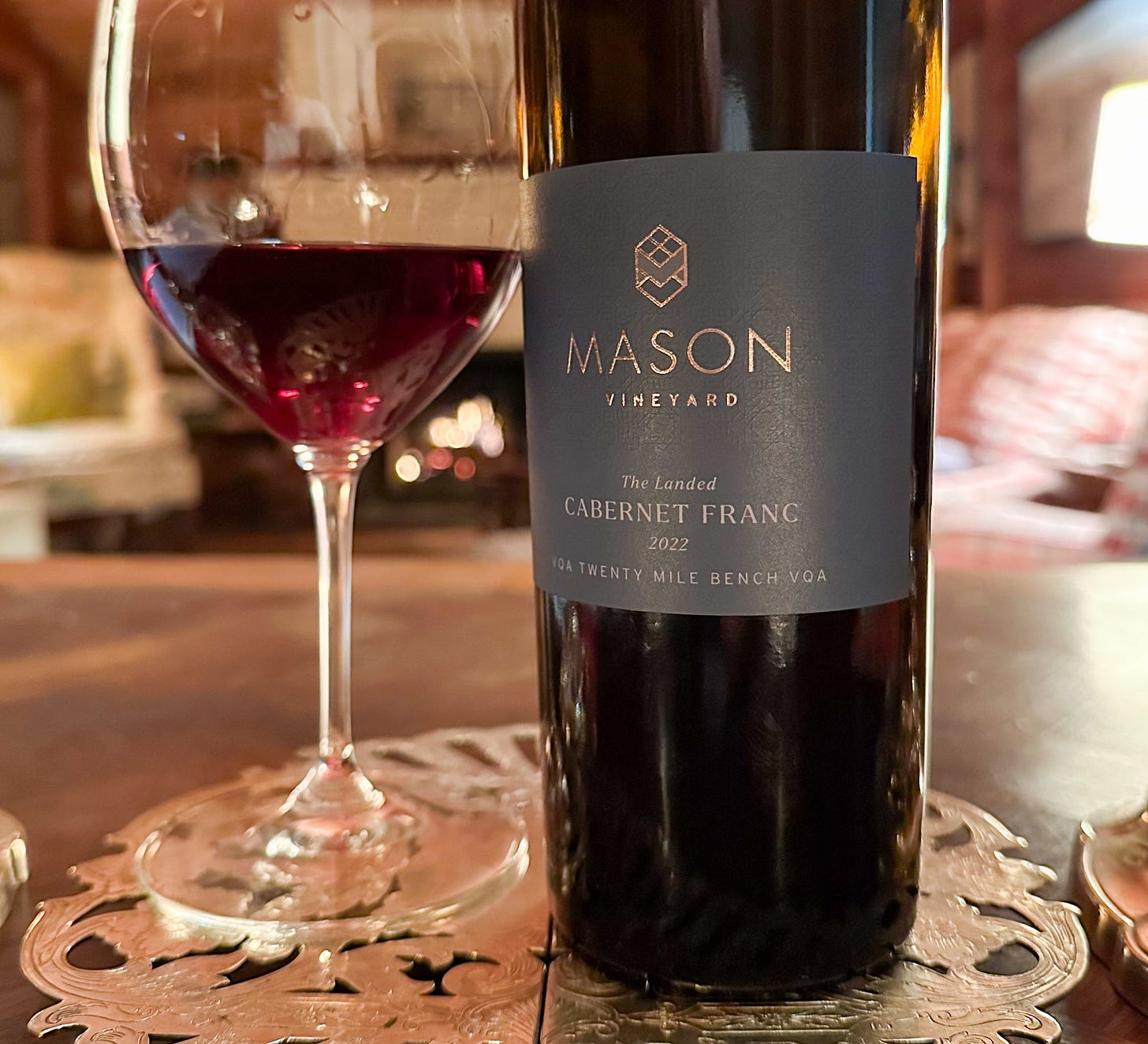Kelly Mason is one of Ontario’s finest winemaking talents. Having started her career as a winemaker in 2007, she purchased her namesake vineyard in 2012. Located just outside the village of Vineland in the Twenty Mile Bench VQA sub-appellation, the vineyard was planted between the mid-1980s and the early 1990s with varieties well-suited to Ontario’s climate like Chardonnay, Pinot Noir and Cabernet Franc. Prior to taking over the 13-acre vineyard, it was farmed for quantity rather than quality, and as a result she spent the first three years re-pruning the vines from a four-arm kniffin training system to a more quality-oriented, double guyot system.
The vineyard sits at about 135m above sea level on the Bell Terrace, which is the first or the lowest of the wide north-facing terraces that define the Niagara Escarpment vineyard area. The 2 acres of Cabernet Franc were planted in the mid-1980s, and the soil in this block is deep, glacially-derived Chinguacousy clay, which is a mix of clay and silty-clay with dolomite and sandstone stones and pebbles throughout. Kelly is extremely hands-on and detail oriented with her work in the vineyard, doing all of her own pruning and shoot thinning, treating each vine individually to assess canopy vigour and yields to ensure the vine is balanced to achieve optimal ripeness with low yields.
In terms of the winemaking, Kelly takes a rather classic approach to the vinification and aging for her Cabernet Franc. It is fermented whole berry in stainless steel, with a brief cold soak in advance of alcoholic fermentation. The total time on skins is about 25 days, with a mix of pumping over and punch-downs during the fermentation and post-fermentation maceration. Aging is in predominantly second and third fill, neutral French oak for about 18 months. The 2022 vintage was a very good one for the Bordeaux varieties in the Niagara Peninsula. While there was widespread winter damage throughout the region, those vineyards that came away unscathed benefited from a long, warm and sunny growing season. Based on my preliminary tastings, I actually prefer 2022 to 2020, which many have heralded to be the “vintage of the century” for the Bordeaux varieties in Niagara, but for me the 2022s bring a touch more balance and freshness than most of the 2020s I’ve tasted.
The 2022 ‘The Landed’ Cabernet Franc shows extremely well on opening, not needing much, if any, aeration or decanting to begin to express itself. The nose presents with a very classic Niagara Cabernet Franc profile, with a mix of foresty red and dark fruits, such as raspberry, black currant and black raspberry, with earthy notes of tobacco, bay leaf, thyme and cedar wood. The nose is quite elegant, bright, pure, with a subtle, lifted aromatic profile. The mix of foresty berries continues on the palate complemented by a pleasant mix of cherries and spice (clove, allspice, nutmeg) in the middle palate, reminiscent of mulled wine in the winter time. The acidity is lively, mouth-watering with a slight snappy or crunchy kick towards the end, which marries with very silky, supple tannins that have a fine, chalky profile on the finish. The wine is medium bodied, elegant and balanced, with a certain degree of polish without being overdone. The 2022 is very much in keeping with my introduction to Kelly’s approach with Cabernet Franc, which came vis à vis the 2018 Grand Réserve Cabernet Franc from Domaine Queylus. It is a restrained, finesse-driven example of Niagara Cabernet Franc that is true to the place and very true to the grape. I purchased a few bottles of this 2022, and I think the cellar potential for this wine is very good. It is drinking quite well now, but I’m sure it will continue to improve over the next 5 to 10 years.
From the Archives
To discover more my favourite Ontario Cabernet Francs, you can visit my playlist channel on YouTube to watch some feature deep dives, or feel free to send me an email.





